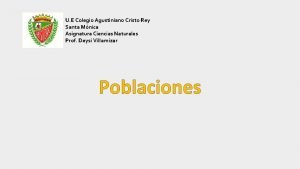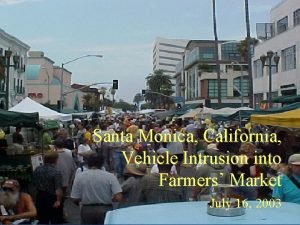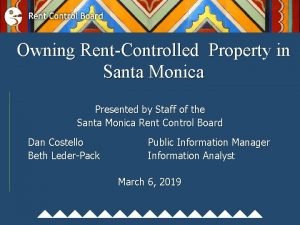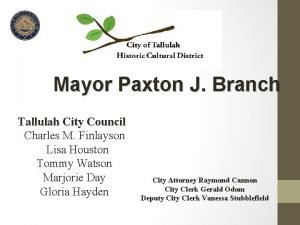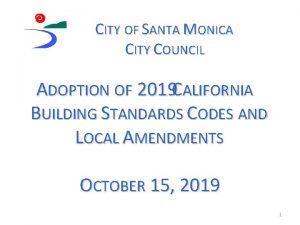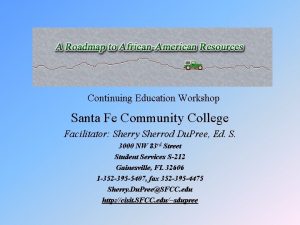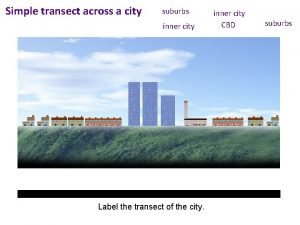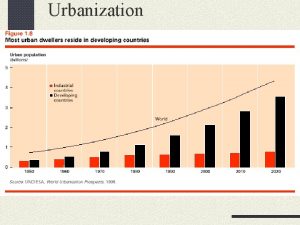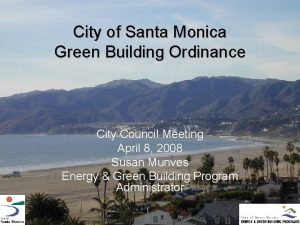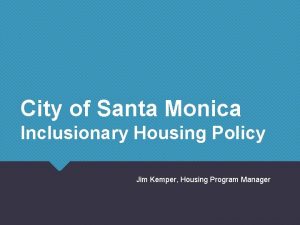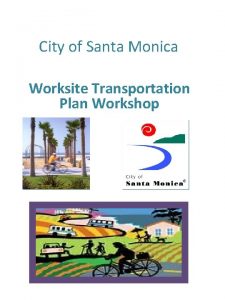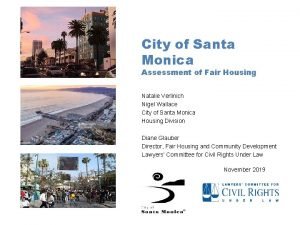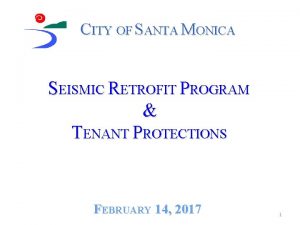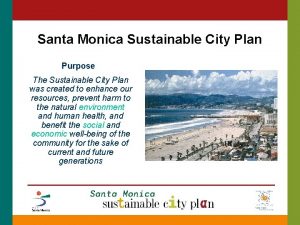City of Santa Monica Panhandling Education Campaign Campaign














- Slides: 14

City of Santa Monica Panhandling Education Campaign: Campaign Research and Development Presentation to the Santa Monica City Council May 13, 2008

Objective • Develop a campaign that will: – Reduce giving directly to panhandlers – Provide alternative giving mechanisms • Aiming to: – Visibly reduce panhandling in Santa Monica – Reduce perceived seriousness of homelessness and panhandling – Increase awareness of Santa Monica’s existing services

Campaign Development Process • Conduct research – Input from stakeholders and experts • Focus group and one-on-one interviews – Motivations for giving to panhandlers • Intercept survey – Message research • Focus groups • Build and leverage community support • Educate key targets: residents, business, tourists, panhandlers

Stakeholder Research • Community focus group conducted April 16, 2008 • One-on-one interviews held April 4 -May 12, 2008 • Research included 31 individuals from: – Business (Bayside, Chamber, CVB, etc. ) – Social service providers – Police and Fire Departments – Faith leaders – City residents / neighborhood associations – Hospitals – Homeless individuals

Stakeholders: Key Findings Overall Feedback • Generally broad support for campaign • Great concern for panhandling’s impact on tourism • Desire to frame campaign with compassion, avoiding judgment and stereotypes • Some doubt the campaign can be effective • Concern about unintended consequences • Universal praise for Santa Monica’s work on homelessness, but need for greater awareness

Stakeholders: Key Findings Alternative Giving • Want to discontinue the dolphin program, and create broader point-of-contact program • Want process to be transparent and results to be clear and highly publicized • Divided on keeping funds in Santa Monica vs. distributing regionally Community Support • Stakeholders want to help support the campaign • Willing to use existing networks

Intercept Survey • Survey conducted March 25 – April 2, 2008 • Promenade, Ocean Ave, pier, farmers’ market • Convenience sample of n=314 respondents • Respondents: CA (not LA) n=31 Greater LA n=136 U. S. A n=50 Santa Monica n=64 International n=30

Intercept Survey: Key Findings How serious a problem is panhandling / homelessness? 28. 6% 42. 1% 50. 1% 70. 3%

Intercept Survey: Key Findings In the past year, have you ever given money to panhandlers? 16. 7% 0% 12. 9% 13. 3% 12. 5%

Intercept Survey: Key Findings What would you guess most panhandlers do with the money they collect? 34. 7% 45. 3% 27. 3% * 51. 5% * Note: very small sample size

Intercept Survey: Key Findings Does the presence of panhandlers influence your decision to visit? 9. 9% 14. 1% 15. 9% 25%

Intercept Survey: Key Findings Other key findings • Panhandlers not all viewed as homeless • Low awareness of current efforts to address homelessness – 42. 2% of Santa Monica residents and 45. 8% of Santa Monica workers aware of efforts vs. 20. 7% of aggregate • Encountering panhandlers makes people feel annoyed, sad, sympathetic or uncomfortable • High receptivity to giving to alternative mechanisms located on or around the Third Street Promenade • Santa Monica residents and workers and frequent visitors to Downtown are less receptive to alternative giving

Moving Forward: Takeaways • Show the negative impact of direct donations • Redefine compassion – More compassionate not to give directly • Address the emotions brought up: – Annoyance, sadness, guilt and discomfort • Provide alternative giving opportunity at the point of potential encounter with panhandlers • Educate Santa Monica residents that the campaign can make a real difference • Identify additional advertising opportunities – Current vehicles extremely limited

Next Steps • • • Message development and testing → Spring 2008 Continue building community support → Spring-Fall 2008 Leverage partnerships → Summer 2008 / Ongoing Educate residents → Fall 2008 / Ongoing Launch public education campaign → Fall / Winter 2008 Success depends on long-term support, investment and momentum
 City of santa monica housing authority
City of santa monica housing authority Agustiniano cristo rey
Agustiniano cristo rey Santa monica california
Santa monica california Santa monica rent control information sheet
Santa monica rent control information sheet City of tallulah
City of tallulah Santa monica college honors program
Santa monica college honors program Percy jackson and the lightning thief chapter 17
Percy jackson and the lightning thief chapter 17 Santa monica housing authority
Santa monica housing authority Santa monica building code
Santa monica building code Santa apolonia santa rosa
Santa apolonia santa rosa City of santa rosa jobs
City of santa rosa jobs Mba sfcc
Mba sfcc Griffin ford latin american city model
Griffin ford latin american city model Cbd inner city suburbs
Cbd inner city suburbs Is mexico city a primate city
Is mexico city a primate city

